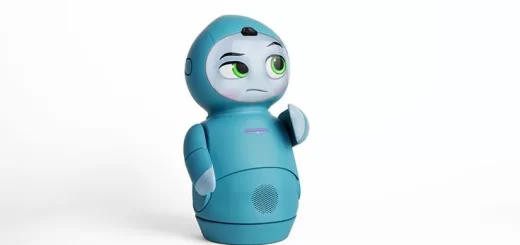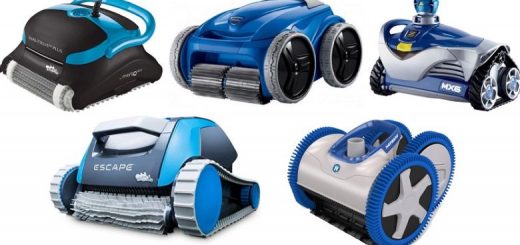Robotic Pool Cleaners (RPC) review, uses, advantages and disadvantages
Robotic Pool Cleaner is very easy to use and install, It does not require your assistance for cleaning your swimming pool, It offers awesome features, It is environment-friendly, energy efficient & money saver, It saves the water and maintains the pool safe from chemicals, It comes with low maintenance, It has Plug-and-play and it has advanced cleaning Technology.
Robotic Pool Cleaner advantages
Robotic pool cleaner is the most recommended type of pool cleaner due to its end-to-end functionality & ultimate cleaning results, Robotic pool cleaner has an electric motor that comes along with its pump and filters to collect debris from the pool, It can clean the wall, floor, and steps of swimming pool, and it is considered as a self-directed pool vacuum cleaner.
Robotic Pool Cleaner can gather large & small particles of dirt from the swimming pool, It can scrub every part of the pool, It can facilitate to circulate the water around the pool for better efficiency, It eliminates the chemicals from the water that can affect your health, It filters the water & makes it healthier for swimming in the pool, There is a plug-and-play feature, and there is no need for complicated assembly before using it.
Robotic Pool Cleaners are eco-friendly and safe for the surrounding environment, They run underwater & they do not produce hazardous chemicals that can be mixed with water that would harm anyone in the pool, Unlike other robotic devices, They don’t produce harmful gases, its heat is being well controlled, They do not consume high energy to work efficiently, RPC saves energy thus saving you money at the same time.
Robotic pool cleaners use advanced brushing technology that scrubs all sides & edges of your pool wall effectively, So, you can lessen the use of chemicals that may potentially be hazardous to users, RPC removes the debris from the circulation pump, Which helps prevent the main filter from getting clogged up frequently resulting in less backwashing & less water wasted.
RPC uses advanced systematic & intelligent cleaning to make your pools pollutant-free, Most models have brushes that spin with the movement of the cleaner, and Some models have an active brush that is motor-driven, Robotic pool cleaner has a continuous cycle of suction & expulsion of water in its system, giving you more accurate reading when testing the water after application.
Robotic pool cleaner takes less energy while operating to clean the swimming pool, You don’t need to maintain it, The size of your robotic pool cleaner will determine how much energy it uses, You should avoid models that use more than 1,000 watts per hour as they’ll cost more to operate over time, There are 3 main types of automatic pool cleaners which are Pressure Side, Suction Side, and Robotic.
Robotic Cleaner can clean the floor, walls, and tile line, Some models have Bluetooth app capabilities where you can navigate the cleaner as well as set the cycle times, Many models come with a caddy that you can coil the power cable on, mount the cleaner, and holds the power supply, allowing you to easily move and store the cleaner in a cool shaded area.
New designs of Robotic pool cleaners can learn the shape of your pool and have attachments & parts that help it clean and scrub the pool tiles and walls, Some innovative designs can scrub step ladders, and their scrubbing power is so efficient you would never even guess that cleaning was done by a machine.
Robotic Pool Cleaner disadvantages
Robotic Pool Cleaner has an electric cord that limits the mobility of this pool cleaner, It can go as far as the cord will go, Even if the latest models can be used for deeper pools, the location of your outlet will greatly influence the length of the cord available for manipulating your robotic pool cleaner.
The robotic pool cleaner is small in size and very efficient when it comes to catching dirt and debris, but you may need to clean the filter a lot more frequently compared to that of your pool filter, you may either need to clean it in the middle of the operation or right after every use, filter require repeated cleaning process and it can’t gather large floating debris from the water.
As the electronics and programming applied to the robotic pool cleaner, your robotic pool cleaner maintenance is going to cost you a lot, It takes a lot of skills to plan and program the robotic pool cleaner, it can be efficient and responsive to your commands using either the provided remote control or your smartphone.
Each model comes with their limitations, Robotic pool cleaners can be expensive, so you’ll want one made from high-quality materials that will last, The cost of a robotic pool cleaner can be more than suction or pressure side cleaners, They are heavy to handle, some repairs can be costly, they are not the best choice for heavy debris, with large sticks, leaves or acorns, or for pools with uneven surfaces, beach entry or steep slopes.
Robotic cleaners are not designed to run on a repeat schedule every day, Some of the premium models will come with a 7-Day Programmable Timer that comes in handy if you go on a short vacation, and the cleaner will need the cycle time set at each cleaning session.
3 main parts can have problems: Power Supply, Cable, and Motor, other parts on the cleaner may need to be replaced due to old age or lack of maintenance, You can run them as long as your house has power.
Robotic cleaners require more effort from the user, These cleaners need to be removed from the pool, rinsed off, and stored in a shaded cool area out of the elements ideally after every use, This will greatly extend the life of the unit, Repair parts cost more and usually take 1-2 weeks to get in stock.
Automatic pool cleaners (RPC) types, pros & cons (Suction-side, pressure-side and robotic cleaners)
Robotics uses, Robotic programs types, Artificial Intelligence importance & risks













